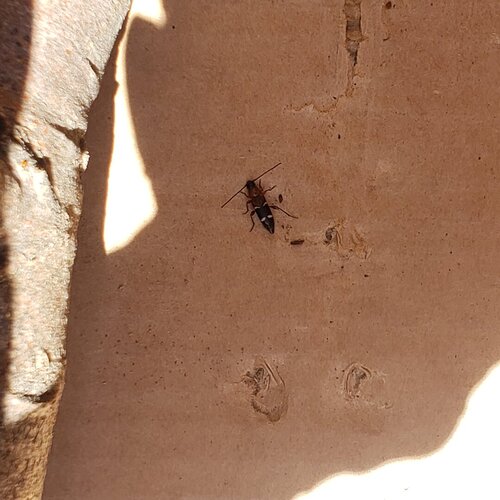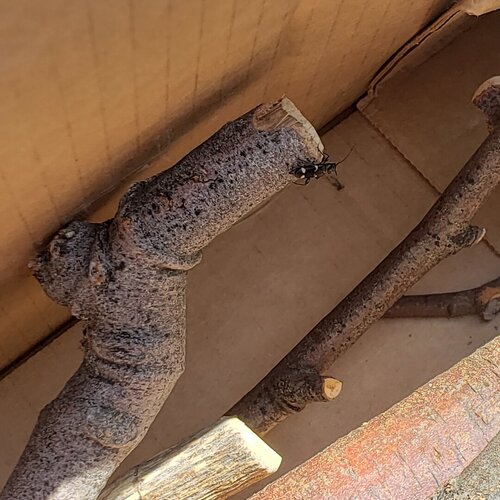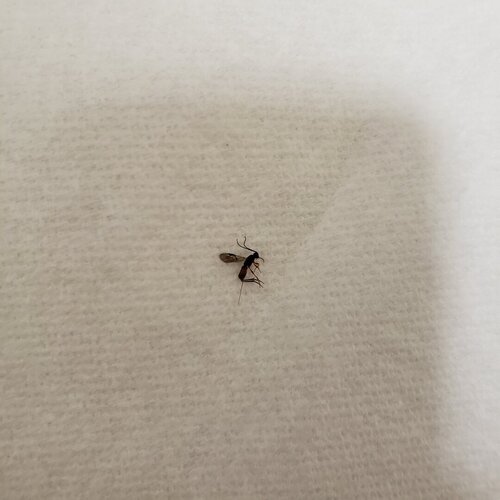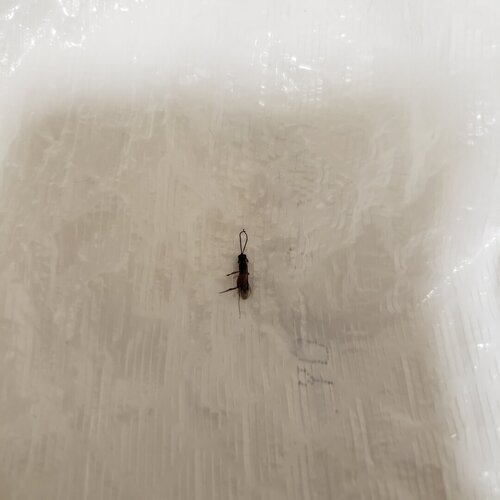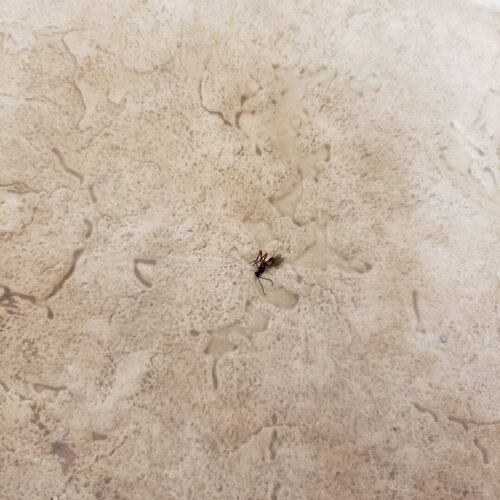Navigation
Install the app
How to install the app on iOS
Follow along with the video below to see how to install our site as a web app on your home screen.
Note: This feature may not be available in some browsers.
More options
You are using an out of date browser. It may not display this or other websites correctly.
You should upgrade or use an alternative browser.
You should upgrade or use an alternative browser.
Sterilizing tree branches?
- Thread starter emilhayek
- Start date
Call me Sal
Member
Thank you
frabjousday
Member
Hi, all! In lieu of creating a new post, I wanted to add to this post.
I ordered some various branches from someone and kept the branches in the box for a couple weeks (I live in the Bay Area, CA). When I opened the shipping box, I saw a couple bugs in there and was surprised. The supplier was extremely supportive and accommodating and ensuring branches are sold for reptile (esp. chameleon) habitats is such a niche "field" that I did not think it was too big of a deal. They supplied some replacement branches to me, which I'm keeping in the box to "inoculate" any potential ones, yet again, although the replacement branches they said were actually baked this time in the oven. The first time around, some of the branches were baked and the ones that were not baked (bc their commercial oven wasn't working) were treated with chlorhexidine. Anyways, for the first shipment's smaller branches, I cleaned thoroughly with water and Dawn dish soap and baked at 310F for about 30-40 minutes; these are fine. The first shipment's larger branches I kept and also cleaned with water and Dawn, but they didn't fit my oven so I've let them air dry.
Lo and behold, I checked the branches today after over a week air drying on my balcony and I'm inspecting them and I see the same bugs from what they had arrived (pictures included below). I realize these bugs might not be harmful, but I believe one of them originally I found is a type of wasp. One of them looks like a wood-boring beetle.
I will be opening my "replacement" box this coming weekend, but do plan on treating the larger first shipment branches with hydrogen peroxide a couple times.
The branches I was able to bake from the first shipment have been set up in my DS Hybrid and I've checked on them daily for signs of little hitchhikers that survived the oven. Fingers crossed: none have survived the baking process thus far.
I ordered some various branches from someone and kept the branches in the box for a couple weeks (I live in the Bay Area, CA). When I opened the shipping box, I saw a couple bugs in there and was surprised. The supplier was extremely supportive and accommodating and ensuring branches are sold for reptile (esp. chameleon) habitats is such a niche "field" that I did not think it was too big of a deal. They supplied some replacement branches to me, which I'm keeping in the box to "inoculate" any potential ones, yet again, although the replacement branches they said were actually baked this time in the oven. The first time around, some of the branches were baked and the ones that were not baked (bc their commercial oven wasn't working) were treated with chlorhexidine. Anyways, for the first shipment's smaller branches, I cleaned thoroughly with water and Dawn dish soap and baked at 310F for about 30-40 minutes; these are fine. The first shipment's larger branches I kept and also cleaned with water and Dawn, but they didn't fit my oven so I've let them air dry.
Lo and behold, I checked the branches today after over a week air drying on my balcony and I'm inspecting them and I see the same bugs from what they had arrived (pictures included below). I realize these bugs might not be harmful, but I believe one of them originally I found is a type of wasp. One of them looks like a wood-boring beetle.
I will be opening my "replacement" box this coming weekend, but do plan on treating the larger first shipment branches with hydrogen peroxide a couple times.
The branches I was able to bake from the first shipment have been set up in my DS Hybrid and I've checked on them daily for signs of little hitchhikers that survived the oven. Fingers crossed: none have survived the baking process thus far.
Attachments
Pickle-cham
Chameleon Enthusiast
Looks to be a wasp mimic beetle not sure of the variety. Are you going bio-active or chemical? Good of the supplier to give you aftercare on your purchaseHi, all! In lieu of creating a new post, I wanted to add to this post.
I ordered some various branches from someone and kept the branches in the box for a couple weeks (I live in the Bay Area, CA). When I opened the shipping box, I saw a couple bugs in there and was surprised. The supplier was extremely supportive and accommodating and ensuring branches are sold for reptile (esp. chameleon) habitats is such a niche "field" that I did not think it was too big of a deal. They supplied some replacement branches to me, which I'm keeping in the box to "inoculate" any potential ones, yet again, although the replacement branches they said were actually baked this time in the oven. The first time around, some of the branches were baked and the ones that were not baked (bc their commercial oven wasn't working) were treated with chlorhexidine. Anyways, for the first shipment's smaller branches, I cleaned thoroughly with water and Dawn dish soap and baked at 310F for about 30-40 minutes; these are fine. The first shipment's larger branches I kept and also cleaned with water and Dawn, but they didn't fit my oven so I've let them air dry.
Lo and behold, I checked the branches today after over a week air drying on my balcony and I'm inspecting them and I see the same bugs from what they had arrived (pictures included below). I realize these bugs might not be harmful, but I believe one of them originally I found is a type of wasp. One of them looks like a wood-boring beetle.
I will be opening my "replacement" box this coming weekend, but do plan on treating the larger first shipment branches with hydrogen peroxide a couple times.
The branches I was able to bake from the first shipment have been set up in my DS Hybrid and I've checked on them daily for signs of little hitchhikers that survived the oven. Fingers crossed: none have survived the baking process thus far.
frabjousday
Member
The supplier told me they couldn't heat treat with an oven last time (large ones), but sent replacement ones. I'm just taking it upon myself to rewash everything and bake (the ones that fit my apartment oven). Today, I saw some of those bugs still crawling around on the washed and dried large branches (UGH) so I just treated them all with hydrogen peroxide.Looks to be a wasp mimic beetle not sure of the variety. Are you going bio-active or chemical? Good of the supplier to give you aftercare on your purchase
frabjousday
Member
I don't have a bioactive enclosure, if that's the question.Looks to be a wasp mimic beetle not sure of the variety. Are you going bio-active or chemical? Good of the supplier to give you aftercare on your purchase
Pickle-cham
Chameleon Enthusiast
If not bio-active harsher chemicals can be used such as f10 or safe4. hydrogen peroxide is a great option though since it is highly volatile and breaks down to water and oxygen so has a added side effect of oxygenating plant roots as well as disinfection. Its natures own disinfectant and is in higher quantity in rainforest rains, hence why i use it in my weekly cleaning schedule with my chameleon out of cage of courseI don't have a bioactive enclosure, if that's the question.
frabjousday
Member
The ones I am sanitizing (large branches, unbaked) are still on my balcony, drying since I just treated with hydrogen peroxide. Thank you for the support. I am just extra cautious about ensuring the branches are completely sanitized because I rent my apartment and want to minimize any sort of unwanted invasion. Thank you so much for the reassurance.If not bio-active harsher chemicals can be used such as f10 or safe4. hydrogen peroxide is a great option though since it is highly volatile and breaks down to water and oxygen so has a added side effect of oxygenating plant roots as well as disinfection. Its natures own disinfectant and is in higher quantity in rainforest rains, hence why i use it in my weekly cleaning schedule with my chameleon out of cage of course
Klyde O'Scope
Chameleon Enthusiast
Have you tried a google image search on your pics to help identify them? Just a thought.I ordered some various branches from someone and kept the branches in the box for a couple weeks (I live in the Bay Area, CA). When I opened the shipping box, I saw a couple bugs in there and was surprised.
Where did the branches come from?
In the northeast, we have a particularly nasty invasive species—the Asian Longhorned Beetle (ALB)
https://www.google.com/search?q=Asi...WWX80KHbvGDGwQ_AUoAXoECAEQAw&biw=1024&bih=636
What you have doesn't look like the ALB (which is larger). My point is about invasive species in general.
The Asian Longhorned Beetle (Anoplophora glabripennis, or ALB) is a threat to America's hardwood trees. With no current cure, early identification and eradication are critical to its control. It currently infests areas in Massachusetts, New York and Ohio. It threatens recreation and forest resources valued at billions of dollars. The ALB has the potential to cause more damage than Dutch elm disease, chestnut blight and gypsy moths combined, destroying millions of acres of America's treasured hardwoods, including national forests and backyard trees.
https://www.aphis.usda.gov/aphis/resources/pests-diseases/asian-longhorned-beetleSource of the threat:
- Firewood
- Solid wood packing material
- Wood debris and trimmings
- Branches
- Logs
- Stumps
- Lumber
- These materials can spread the infestation even if no beetles are visible
frabjousday
Member
I spent a while trying to identify it and I don't think it's an ALB, either. I was afraid it would be invasive, but I'll have to check the origin of the branches.Have you tried a google image search on your pics to help identify them? Just a thought.
Where did the branches come from?
In the northeast, we have a particularly nasty invasive species—the Asian Longhorned Beetle (ALB)
https://www.google.com/search?q=Asi...WWX80KHbvGDGwQ_AUoAXoECAEQAw&biw=1024&bih=636
What you have doesn't look like the ALB (which is larger). My point is about invasive species in general.
https://www.aphis.usda.gov/aphis/resources/pests-diseases/asian-longhorned-beetle
Similar threads
- Replies
- 31
- Views
- 5K
- Replies
- 8
- Views
- 4K

